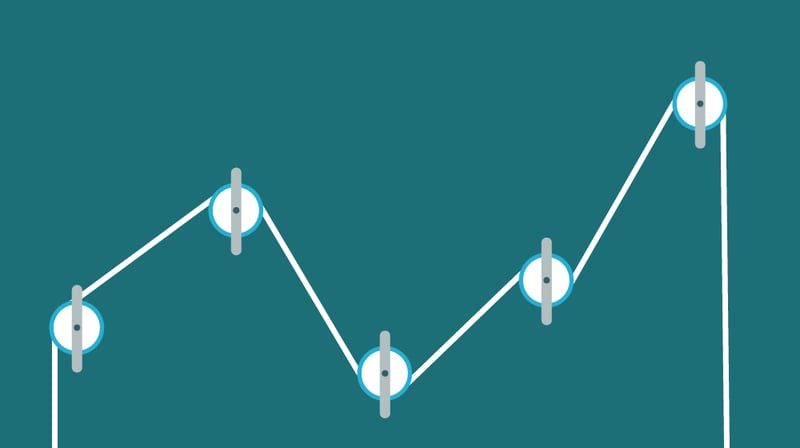“Trying to do assessment without partnering with students is like trying to do home renovation with our bare hands.” – Jen Pelletier, Student Affairs Assessment Professional
Including students in assessment is crucial to student affairs success.
Similar to onboarding colleagues to assessment practices within a department, we need to teach students how to utilize assessment practices to continually understand their impact as leaders.
When we provide students with the opportunity to learn about assessment, we present how it will benefit them: understanding assessment process will help them land a job post-graduation. Most positions utilize qualitative and quantitative data in some way, shape or form to obtain feedback.
Utilizing assessment processes with students goes beyond the inherent need to develop better practices and programs: we need to create the best data-driven decision makers to prepare students for their future.
Involve Students In The Process
I remember when I was teaching past Resident Assistants (RAs) how to submit maintenance request forms online. We had a projector hooked up to my laptop in a classroom for RA training and I repeatedly showed them how to enter different types of maintenance issues (if you’ve worked in residence life or housing, you understand how many types of issues you can report).
The student leaders in the room watched many times, but their understanding of how to submit the form in different ways didn’t actually increase. Their eyes started to glaze over. Finally, I said, “I need volunteers!” I called up a few students ranging from first-year RAs to the most senior RAs. I told them, “Now you’re going to teach me and everyone else in the room how to submit these forms.”
I noticed other RA’s attention spark in the room. Students who are prone to slouching towards the back perked up rather quickly when they saw their peers participate in a hands-on learning experience. One of the most powerful lessons I learned from supervising students was to continually hand the reigns over to them to develop their leadership skills. As educators, we must understand how students learn and help them digest information in different ways.
One of my favorite quotes is,
“Tell me and I forget; show and I remember; involve me and I understand.”
As educators, we tend to utilize teaching strategies, which is what we’re naturally inclined to do. We need to take it a step further. For trainings or projects, we research the content, highlight important information, and then broadcast what we learn to a room of student leaders.
We look into the audience and what do we see? Student leaders who seem to be listening, sitting and maybe taking notes. Then we ask them to apply it later and they forget everything they learned.
It’s Like Riding A Bike
When we’re teaching students to assess and why it’s important we need to make the process relatable. Do you remember when you first learned how to ride a bike (or attempted to learn a new activity)?

image from skeptics.stackexchange.com
The more student leaders involved in the assessment learning process, the more their bodies (and brains) will retain the information. Teaching assessment is not a one-time training. It’s having advisors and professionals working alongside students to analyze data they collect and continually help them reach their goals.
I felt great about the volunteers who showed the rest of the room how to submit various request forms. After a few times of practice, I knew that they had the basics down. I continually called up volunteers to see if they could match standard operating procedures (SOPs) to maintenance issues to help them fill out the forms required – they nailed them every time.
Improve Campus Programming & Events
We can teach students how to regularly analyze evidence of their own progress. It’s more than just data entry and spreadsheets! At many institutions, the power of data to improve student involvement and engagement is not fully leveraged because students are left out of the process.
When students identify, analyze, and use data from their learning, they become change agents in their approach to involvement. We need to teach students about the assessment cycle in a relatable way: tie assessment back to clubs and organizations they lead and show them how their efforts impact institutional goals (retention, engagement).
We have the opportunity to strengthen students’ abilities to assess their own progress in the organizations they manage. Students can use their clubs and organizations as a source of data to analyzing strengths, weaknesses, and any gaps in their student engagement approach.
We can move conversations from being abstract and generic (i.e. let’s increase our participation at events) to more student-oriented, targeted goals (i.e. increase participation and engagement of first-year students by %).
Examples of areas students can improve and understand include:
- Understanding attendee behavior
- Analyzing attendee demographics through data analytics
- Optimizing campus programs and events
- Atmosphere and accessibility
- Improving marketing and online engagement
- Determining return on investment (ROI)
They can use software like Presence to understand what types of students they’re attracting to events on campus and how to involve student groups they may be missing in their student engagement strategy.
Ask Students What They Learned
Ask students what they learned throughout and after the process: what really surprised them and how did it help them make informed decisions?
Think #SAassess doesn’t impact student dev’t? Compelling talk re: incl. students in the process=real dev’t outcomes. #SAARC2016 #RyersonSA
— Lesley D’Souza (@LesleyDSz) June 24, 2016
Helping students identify challenges with key goals helps them develop a growth mindset: using data to overcome challenges and a limiting mentality.
Using the simple phrase, “What do you think?” makes students opinions feel valued and encourages them to think independently about data (and may provide us with new perspectives to think about data and involvement too).
An important piece of asking students what they learned should be grounded in the celebration of making mistakes. Often when we’re identifying intentional or unintentional mistakes, students are more willing to set new goals and have the motivation to accomplish them because they understand where they stem from.
When students understand outcomes of assessment, they will feel more responsible for their actions and impact it has on their club or organization. Although student leaders vary in their developmental stages, it’s crucial to give them assessment opportunities to develop their competence in critical reflection in relation to analyzing data.
Students Will Teach Their Peers
After we involve students in assessment practices and equip them with the best tools and knowledge, they will continue to teach their peers.
When students teach and involve other students, they are forced to explain the concept of assessment to someone else. They put themselves in the position of an educator and their learning skyrockets because the process is continually reinforced (kind of like riding a bike ? ).
Your Thoughts!
Using data with students helps us to build the next generation of reflective and confident data-driven leaders with dispositions of career readiness.
What are some of your ideas to involve students in the assessment process?
What are some ways students assess their own learning outcomes and goals in relation to campus programming and events? What did they learn?
Tweet us @themoderncampus with your thoughts and experiences. Thanks for reading!





